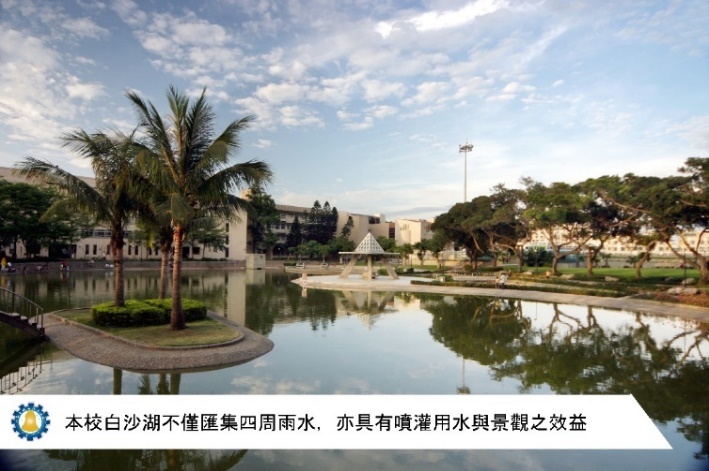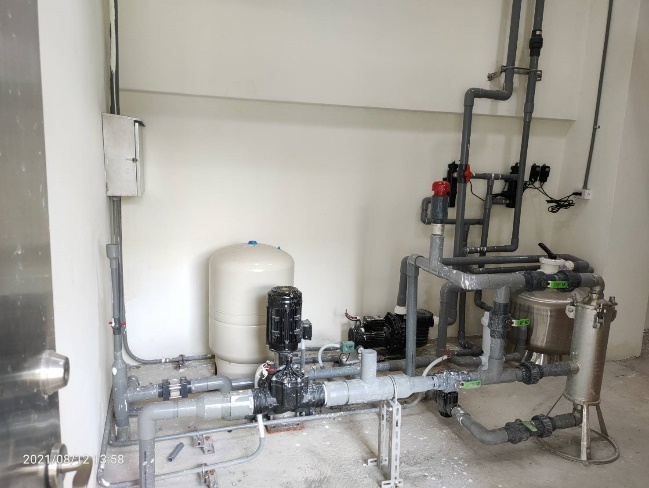SDG 6.5.4 Sustainable water extraction on campus
Regarding technologies for sustainable water extraction from aquifers, lakes, and rivers, NCUE focuses on the storage and utilization of rainwater and the use of abundant local underground aquifers to meet the water needs of our staff and students. We ensure that they are able to access and understand the concepts of sustainable development and water resources management, thereby facilitating the protection and restoration of water-related ecosystems.
1. Constructed a detention basin:
The artificial Baisha Lake, with an area of approximately 9,000 m2, functions as a detention basin when it rains. It collects rainwater and absorbs water discharged from the surrounding buildings and green spaces. The collected water is then used in sprinkler irrigations for the lawns and flowerbeds on campus. (Figure 1)
|
|
|
Figure 1. The above picture shows NCUE's Baisha Lake is with cultural characteristics of the storage tank |
2. Installed devices for a sustainable water circulation system:
The rainwater storage and water supply system involves the intercepting and storing of rainwater by tapping on the natural terrain or using artificial methods. The rainwater is then reused as miscellaneous domestic water after a simple purification treatment. The reutilization of rainwater serves as an alternative and supplementary source of domestic water and a source of water storage for firefighting. (Figure 2)
|
|
|
Figure 2. Rainwater detention basin: Rainwater is recycled for use in the sprinkler irrigation system |
3. In 2022, NCUE used 124,170 m3 of tap water and 330,572 m3 of underground water, resulting in a total water usage of 454,742 m3. In terms of water usage breakdown, tap water accounted for 27.3%, and underground water accounted for 72.7% of our water usage, as shown in Table 1
Table 1. Total water consumption (in m3) at the Jinde Campus
and the Baoshan Campus in 2022
|
Water consumption in 2022 |
Jinde Campus |
Baoshan Campus |
Total (m3) |
|
Underground water (m3) |
281,786 |
48,786 |
330,572 |
|
Tap water (m3) |
50,428 |
73,742 |
124,170 |


